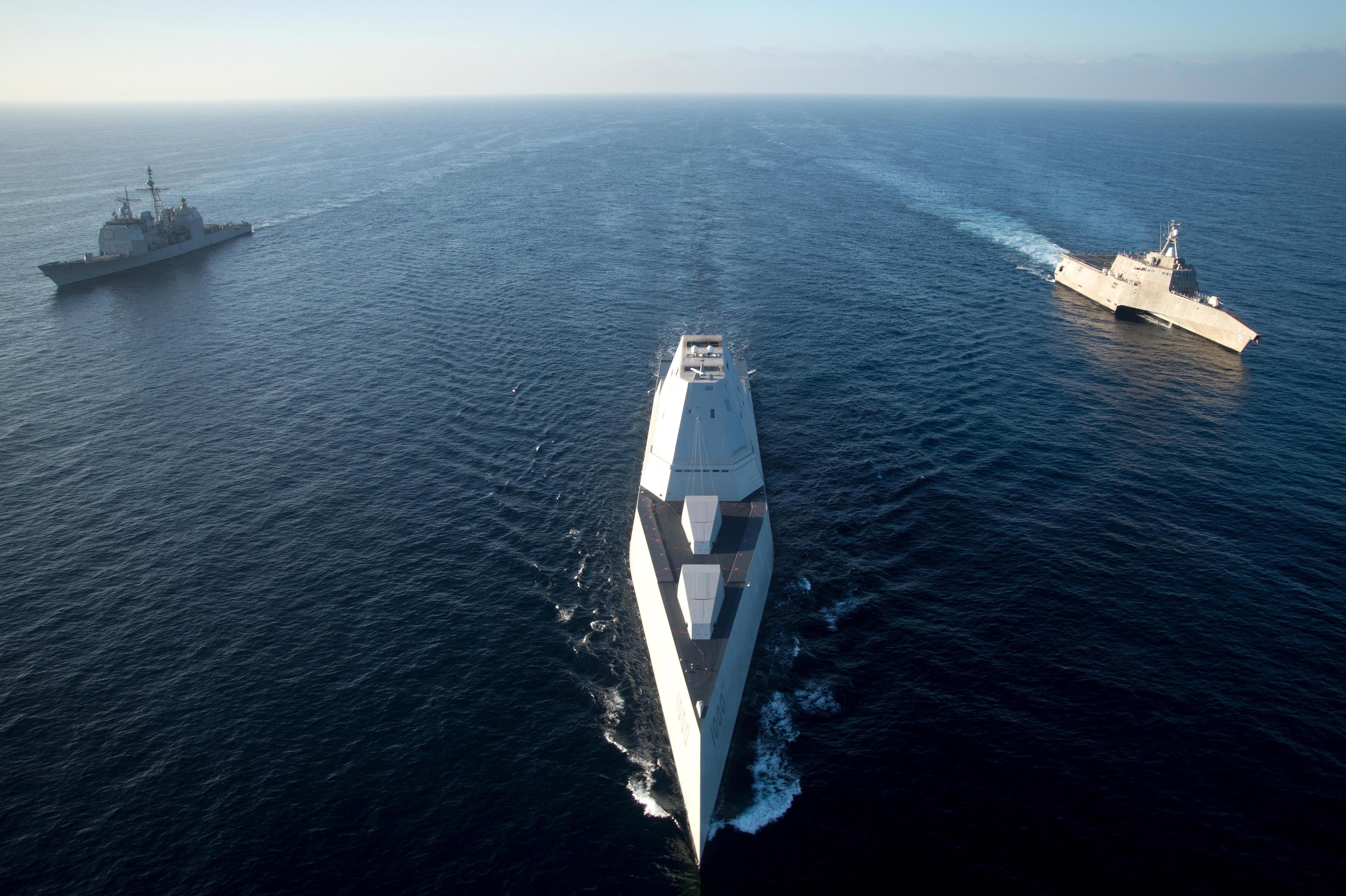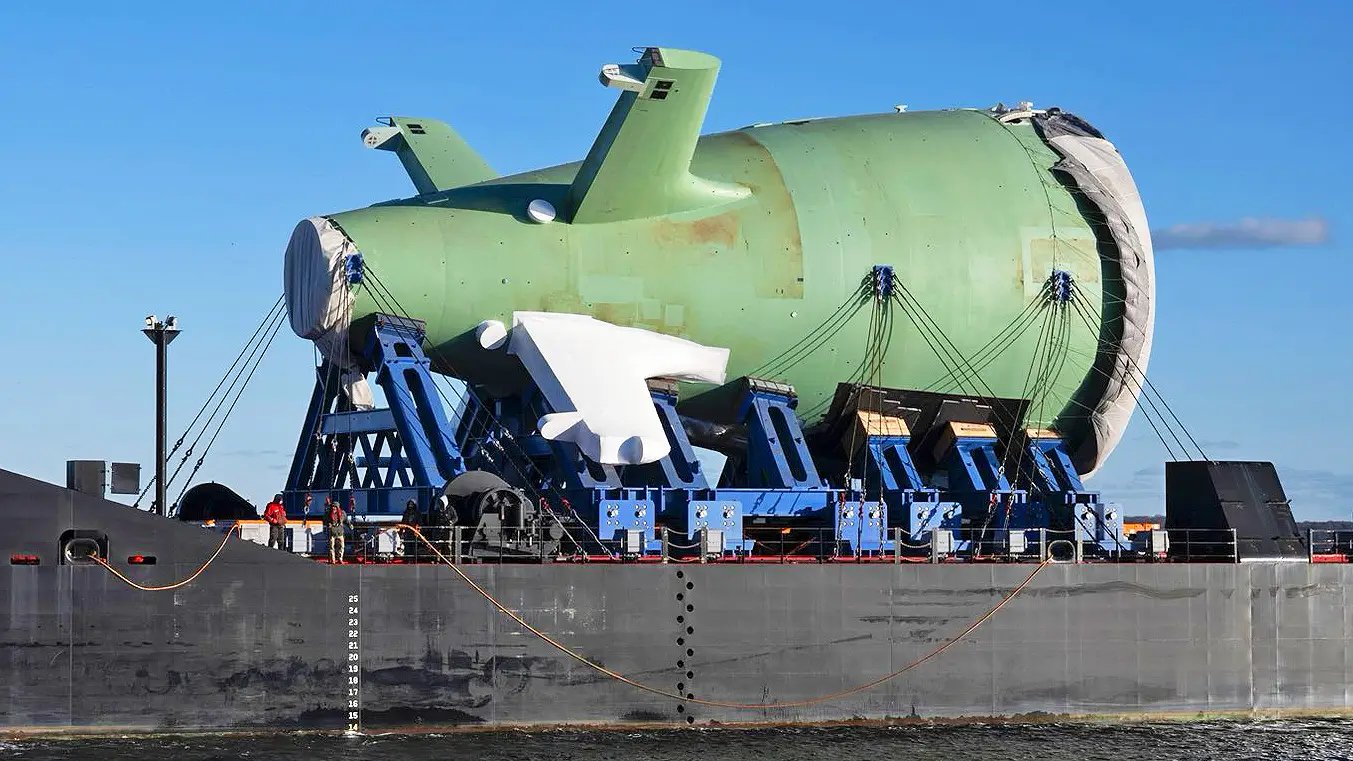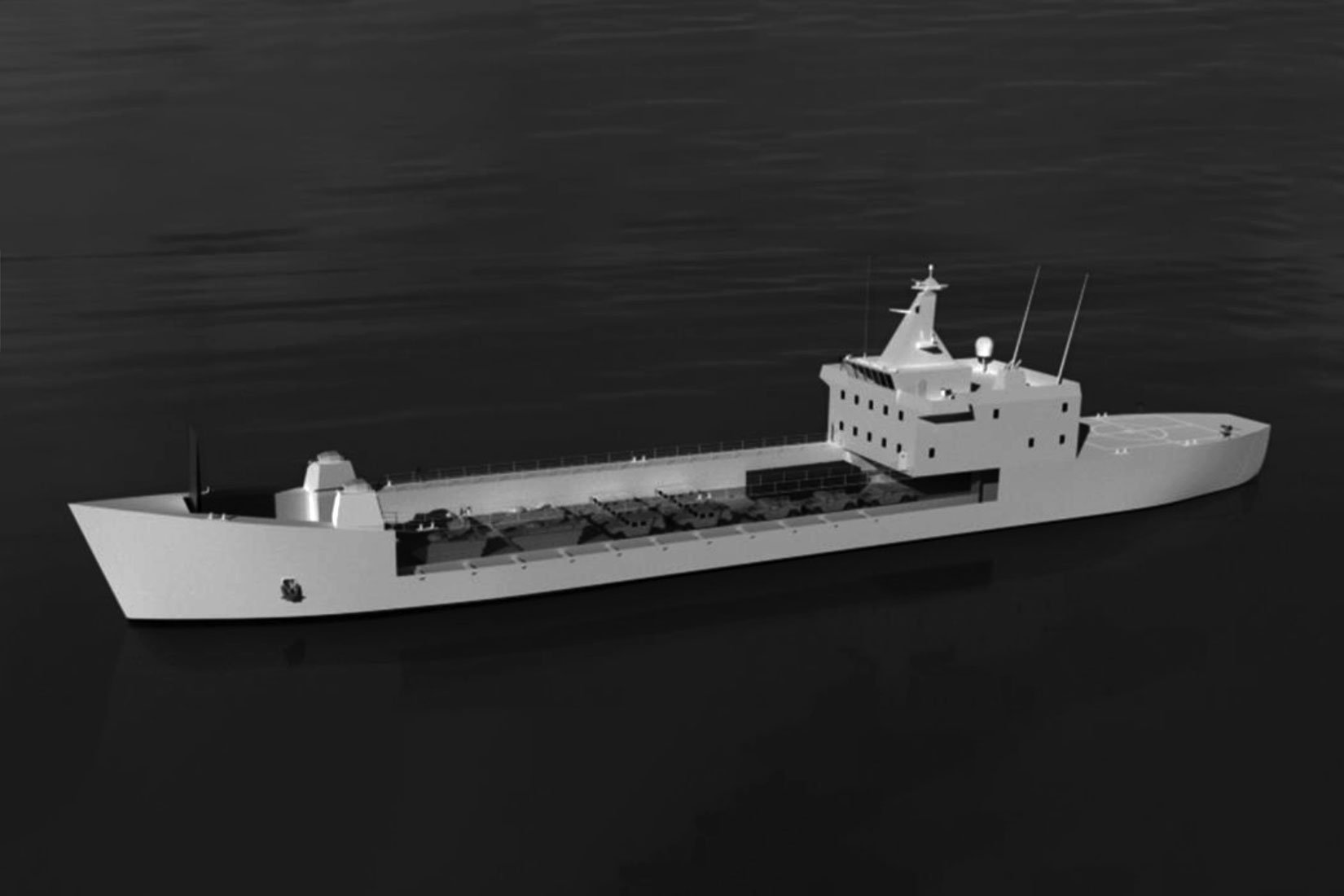
CAPITOL HILL – Major parts from the Navy’s abbreviated class of Zumwalt destroyers (DDG-1000) will be integrated into the service’s program to replace the aging fleet of guided-missile cruisers, Chief of Naval Operations Adm. John Richardson said on Tuesday.
Testifying before the Senate Appropriations defense subcommittee, Richardson said capabilities like the propulsion system and low observability to radars inherent in the Zumwalt design would be key to the future surface combatant.
“A centerpiece of the strategy going forward, which is to garner as many of the lessons learned and roll those into the new ship as quickly as possible. I’ll tell you, we are learning more lessons from Zumwalt every single day about the capability that ship brings,” Richardson said in response to Sen. Susan Collins (R-Maine).
“Whether it be power generation, the role of stealth, the volume that the ship brings, the capability of the ship to bring down very sensitive communications, et cetera… That’s exactly the types of lessons that I would look forward to rolling into the next ship.”
While the more-than-$24-billion program has been plagued with cost-overruns and production and delivery delays, the Navy sees the most promise in the 16,000-ton Zumwalt’s Integrated Power System. Instead of a direct mechanical connection to the drive shafts, the ship’s gas turbines drive an electrical grid that provides ship systems with an excess of electrical power — which would make it easier to add additional sensors and weapon systems in the future. The 75 megawatts of power the ship can generate is unheard-of in a non-nuclear hull. The Zumwalt design also has a wide margin for cooling and weight allowance to accommodate new systems.
Richardson told reporters following the hearing that the ability to swap sensors and weapons on and off the ship at speed is a major consideration for the program.
In the search for the replacement of the Ticonderoga-class, the service is using the same Requirements Evaluation Team process it did to develop its requirements for the FFG(X) next-generation frigate program.
“We actually took some of the work we’re doing with Future Surface Combatant and brought that back (to the FFG Requirements Evaluation Team); we said hey, the Future Surface Combatant is about where we’re going with the whole family of ships, so if we’re going to be producing an FFG of the future that’s going to be kind of at the small surface combatant size, then we don’t want that to be disconnected,” Navy director of surface warfare Rear Adm. Ron Boxall told USNI News in December.
Since then, Richardson told reporters after the hearing, the service has been working toward keeping the requirements for the next combatant fixed to reduce any churn that could lead to additional time on the front end of the program.
A decade ago, the Navy canceled its planned CG(X) next-generation cruiser program after a years-long requirements process that produced a design that was estimated to cost $6 billion a ship.

In a response to Collins on how the Navy would work to avoid the same problems General Dynamics Bath Iron Works struggled with moving from building Arleigh Burke guided-missile destroyers (DDG-51) to the Zumwalts, Richardson said the key was having stability on the front end of the process.
“It’s stability of requirements and stability of design that allows us to put together a program that meets the nation’s needs that is stable and predictable and then can be executed in a way that is a smooth and sails right through,” he said.
Speaking to reporters later, Richardson demurred on the question of whether the service would be using an existing parent design for the next generation combatant or move into a clean sheet design.
“I wouldn’t get too specific in terms of ‘hey is there a hull that exists out there;’ it’s more along the terms that there are lessons. Can we take advantage of what we know and what we’ve learned from Zumwalt and what we’ve learned from other programs, capture those lessons and get something down so that we can build it faster and take faster iterative steps as we go forward,” he said.
“Something like the hull, that’s going to last the life of the ship and there’s probably not a tremendous amount of knowledge that we’re going to gain in terms of ship hulls. So that should come together pretty quickly. Over the life of that ship, though, combat systems, weapon systems, sensors are going to modernize very fast, so you’re going to build that dual timeline in the platform from the start.”





